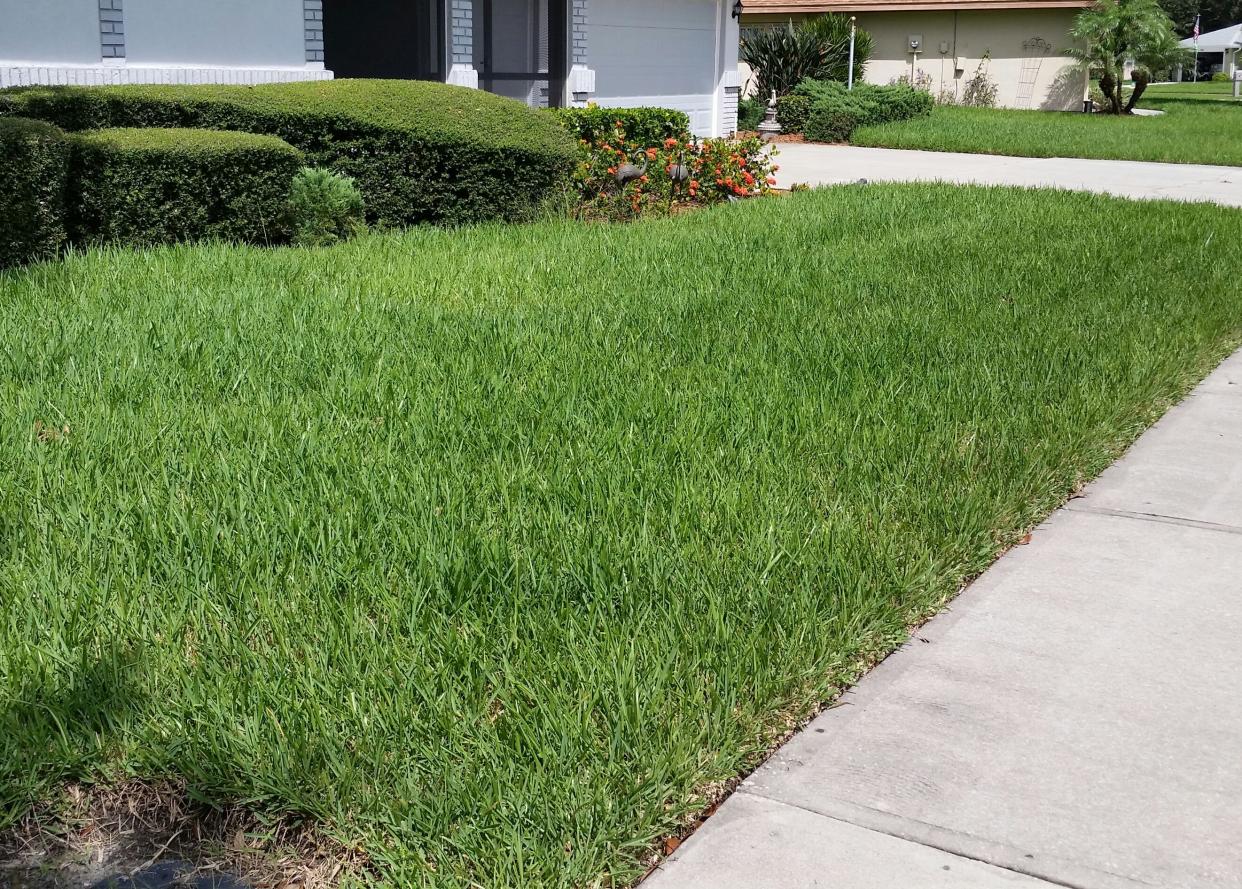How can you achieve a lush, green lawn this summer? Here are 10 tips to follow

Although spring doesn’t officially begin until Tuesday, springlike temperatures have begun to warm the soil, resulting in a green-up of lawn grasses throughout Greater Columbus. Before long, you will start to hear the whir of lawn mowers in your neighborhood.
If your goal is to have a lush green lawn throughout the season this year, then you may want to get outside and assess the condition of your lawn in order to develop a lawn-management plan.
Here are 10 lawn care tips that can help you achieve a lush, dense, green lawn this summer:
Mow grass to 3 to 3.5 inches high
Be sure to adjust your lawn mower to cut at this height. Grass cut to this height will be less prone to insects, disease and weed pressure. Cutting lawn grasses shorter than 3 inches will allow weeds to germinate and can weaken root reserves of lawn grasses.
Mow the grass frequently
Never cut more than one-third of the height of the grass for optimum regrowth and plant health. This means that you should mow when the longest grass blades are 4 to 4.5 inches tall. Bluegrass and fescue are the most common lawn grasses in Greater Columbus and these are cool-season plants that grow fastest in the cool weather of spring and fall. Because of this, you may need to mow your lawn more frequently than once a week in spring and fall, and less frequently in the hot, dry weather typically experienced during the summer.
Leave the grass clippings
Don’t bag your clippings during mowing or rake up clippings after mowing. Instead, leave them on the lawn to break down and return nutrients to the soil. Mulching mowers will make this task easier, as will mowing frequently in spring when grasses grow quickly. Only mow when grass is dry to prevent clumping of clippings.
Understand grass fertility needs
Turf grasses, like most green plants, require adequate amounts of three soil nutrients: nitrogen (N), phosphorus (P), and potassium (K). While phosphorous and potassium are stored in the soil from year to year, nitrogen does not persist in the soil, and approximately 2 to 4 pounds of actual nitrogen (N) per 1,000 square feet should be applied throughout the season for lawns to remain productive and healthy. Spring and fall are the critical times of year to apply fertilizer to lawns.

Lawn fertilizers should be split into three applications made at the time of the year when grass plants require nutrients: late spring, late summer and fall. If you did not apply fertilizer to the lawn last fall, you can make an early spring application now to provide adequate nutrients for green-up and early season growth. Use a slow-release source of nitrogen fertilizer in spring to minimize excess grass growth.
More: Garden: Want to grow apple trees? Here are ideal times to plant and varieties to consider
Test the soil of the lawn
The only method to determine how much potassium (K) and phosphorous (P) your lawn requires is to have your soil tested for fertility. A fertility test will also determine the pH of your soil so that you know whether you need to apply lime to adjust the pH. Most native soils in Greater Columbus are more alkaline and generally do not require the application of lime to maintain an adequate pH level for lawn grasses.
The Franklin County Office of Ohio State University Extension offers soil testing for home lawns, and information about soil testing can be found online at: go.osu.edu/franklinsoiltesting
Don’t over-apply lawn fertilizer
Only the exact amount of fertilizer needed by your lawn should be applied in order to save money and protect the environment. When applying lawn fertilizers, be sure that the fertilizer is applied only to soil and is not accidentally spread on paved driveways, sidewalks or streets where is can be washed into storm sewers and eventually end up in surface waters such as streams and lakes where it contributes to algal blooms.
Water the lawn deeply and infrequently
If you choose to irrigate your lawn when summer rainfall is not plentiful, don’t water on a set schedule. Rather, apply one-half to 1 inch of water once a week. This will be enough water to wet the soil to a depth of 4 to 6 inches and minimize evaporation of irrigated water.
If we experience drought conditions this summer, consider not irrigating and let the grass go dormant during a dry period. While dormant grasses turn brown, they are not dead. Most healthy grass plants will break dormancy and turn green again once adequate soil moisture returns.

Control weeds early
The best time to control weeds is before they ever germinate, so if your lawn contained broadleaf weeds such as dandelion, plantain, ground ivy or any other broadleaf weed last season, applying a pre-emergent herbicide early this spring can reduce the potential for these weeds to invade your lawn later this growing season. A pre-emergent herbicide is a chemical that prevents seeds from germinating.
More: Garden: Could the recent snow and cold snap harm trees? We have some answers
Early spring is also the best time to control crabgrass with a pre-emergent herbicide if this pesky annual grass weed crept into your lawn late last summer. Most crabgrass preventers require the soil temperature to be at least 55 degrees Fahrenheit for maximum effectiveness, and soil temperatures are only about 43 degrees Fahrenheit in Greater Columbus this week, so we should aim to apply crabgrass preventers in the next week to 10 days. A good phenological rule of thumb is to apply crabgrass preventers when forsythia is in bloom.
Seed bare lawn spots early
If you have bare spots in your lawn or areas where the stand of grass is thin, early spring can be a good time to reseed these bare areas and over-seed any thin stands in the lawn. Too often we fail to re-seed early enough in the spring and the resulting new grass seedlings don’t survive the harsh conditions experienced during the hot and dry summer months.
Many times, we don’t notice areas of the lawn that are in need of re-seeding until after we mow the lawn the first several times in spring, and by that time it is difficult for grass seedlings to develop root systems needed to survive the warm, dry conditions of summer. So, before you mow your lawn for the first time this season, walk around the lawn and do a critical inspection to assess the presence of bare spots and thin stands.
Monitor the lawn for pests
As the season progresses, monitor the lawn for the presence of damaging insects, diseases, moles or other wildlife. Only apply insecticides or other types of pesticides when pests are present in numbers above the threshold for causing lasting damage to lawn grasses. The mere presence of insects or other pests does not necessarily mean that significant damage will occur.
Mike Hogan is an Extension Educator, Agriculture and Natural Resources, and associate professor with Ohio State University Extension. hogan.1@osu.edu
This article originally appeared on The Columbus Dispatch: Want to improve the look of your lawn? Follow these 10 tips
